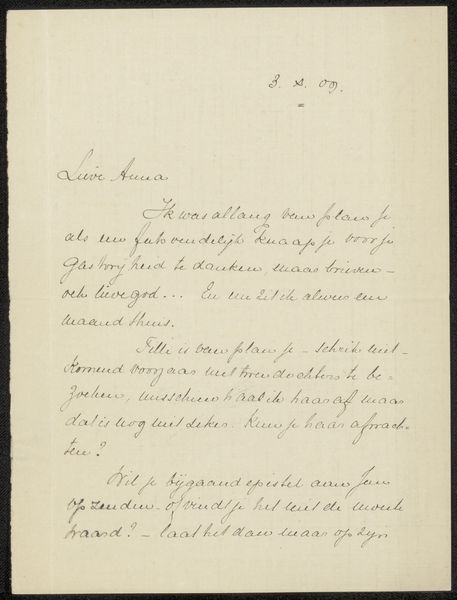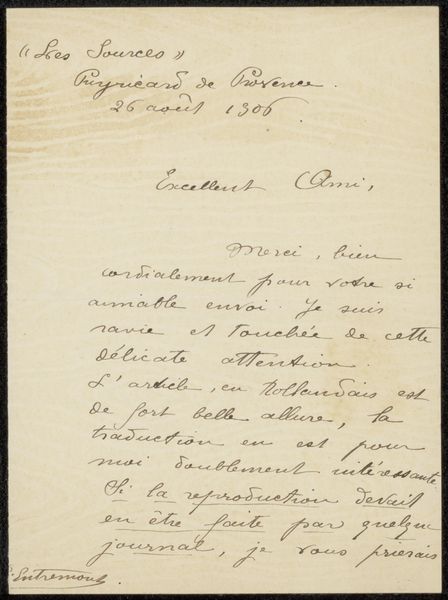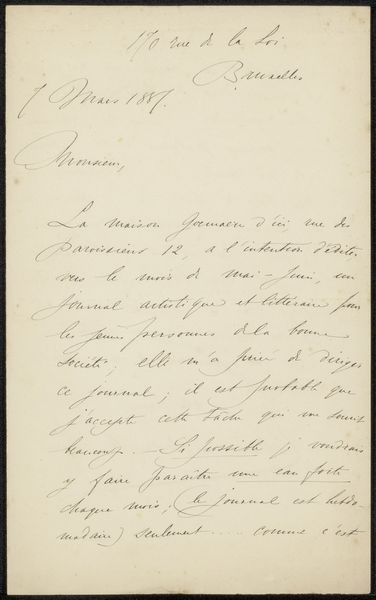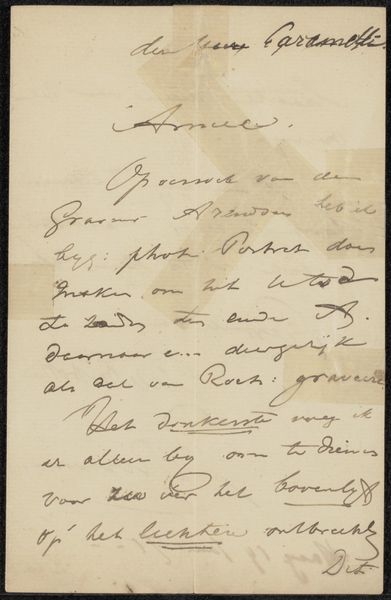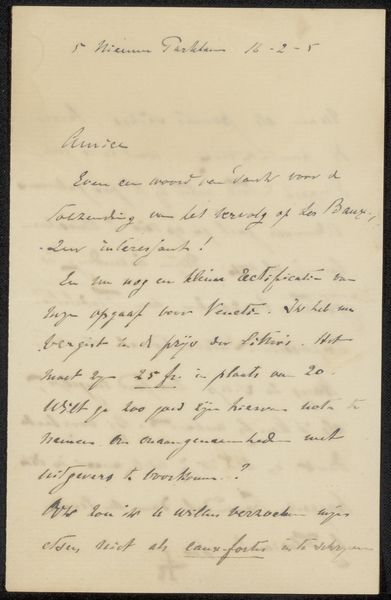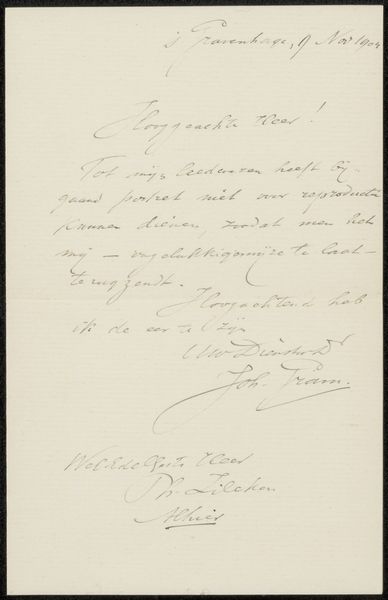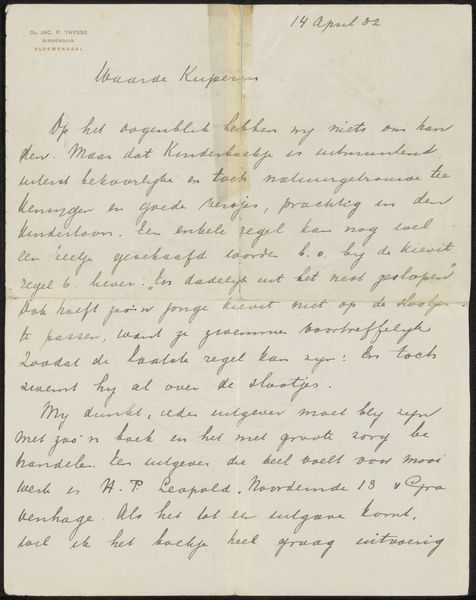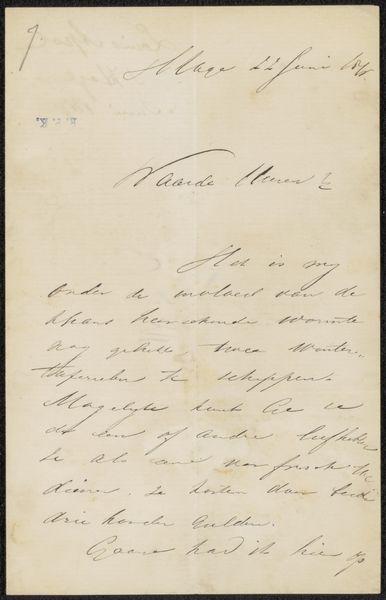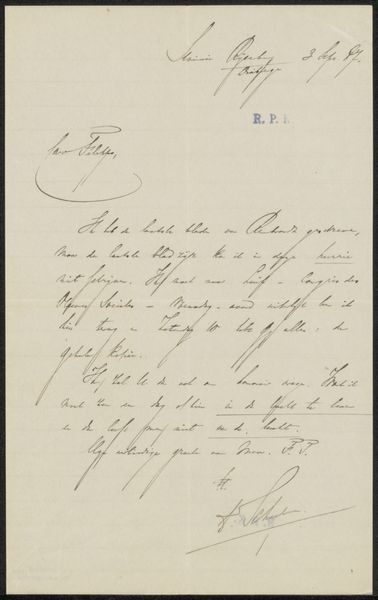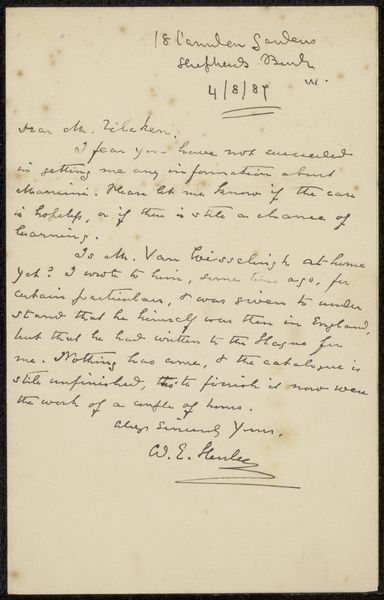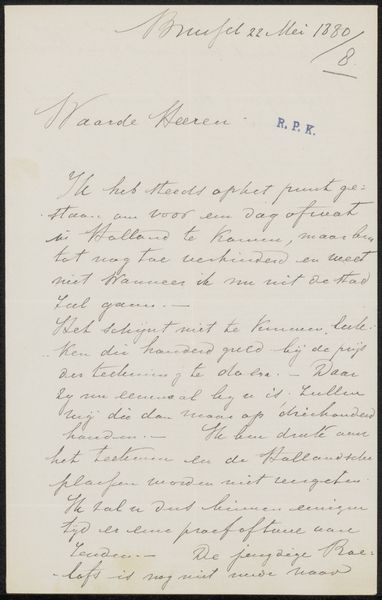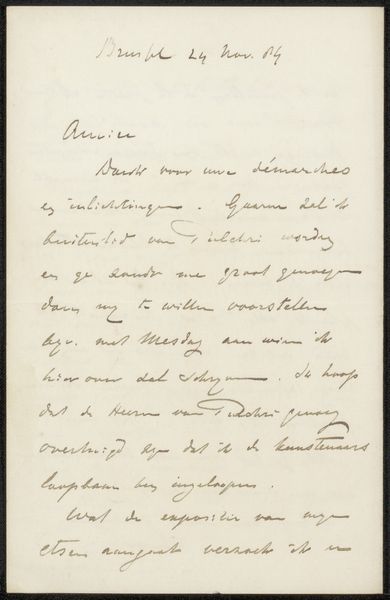
drawing, paper, ink
#
drawing
#
paper
#
ink
Copyright: Rijks Museum: Open Domain
Curator: Here we have “Brief aan de heer Caramelli,” or "Letter to Mr. Caramelli," a piece executed between 1880 and 1884 by Mari ten Kate, residing here at the Rijksmuseum. It’s ink on paper. Editor: The delicacy! There’s an almost reverential hush that emanates from this script. Seeing a handwritten letter now feels so deeply intimate and vulnerable—a ghostly imprint of the writer’s soul. Curator: Exactly. What interests me is considering this "Letter to Mr. Caramelli" as a meticulously crafted object, deliberately chosen paper, carefully mixed ink—it elevates this letter beyond simple correspondence into a physical testament to the social and artistic networks of its time. It speaks volumes about the material conditions that underpin creative exchanges. Editor: It’s more than the materials; it’s the intent, you see? It whispers secrets, desires—ambitions, perhaps? Imagine the candlelight under which it was written, the soft scratching of the pen against the paper. There’s a longing embedded within these lines that speaks of shared dreams. I wonder what Mr. Caramelli thought upon receiving it… Curator: Think too about the cost and availability of materials. Ink wasn’t as ubiquitous as it is now; good paper was a sign of affluence. This wasn't simply scrawled—it's designed and manufactured for circulation, or at least to create a very convincing performance of personal connection through materiality. Editor: Ah, yes, the performance. But that's where the real art lies, wouldn’t you say? In creating the *illusion* of unfiltered emotion? Perhaps what touches me is not what is *literally* written, but the shadow dance performed behind it. It is a delicate expression that feels immediate and ancient simultaneously. Curator: Well, perhaps the material reality helps us step back to evaluate the work. Seeing a handwritten piece like this displayed gives value to everyday objects—showing not just craft but the actual, physical nature of communication and connection within its historical context. Editor: You always have to have the last word, don't you? I still prefer my emotional readings. Even now, considering the texture and the form, this letter transports me beyond facts to the intimate, delicate thoughts of someone communicating their dreams. A simple message—now immortalised. Curator: But it does underscore a powerful thing: that art exists *because* of its materials, its physical creation, which then resonates.
Comments
No comments
Be the first to comment and join the conversation on the ultimate creative platform.
